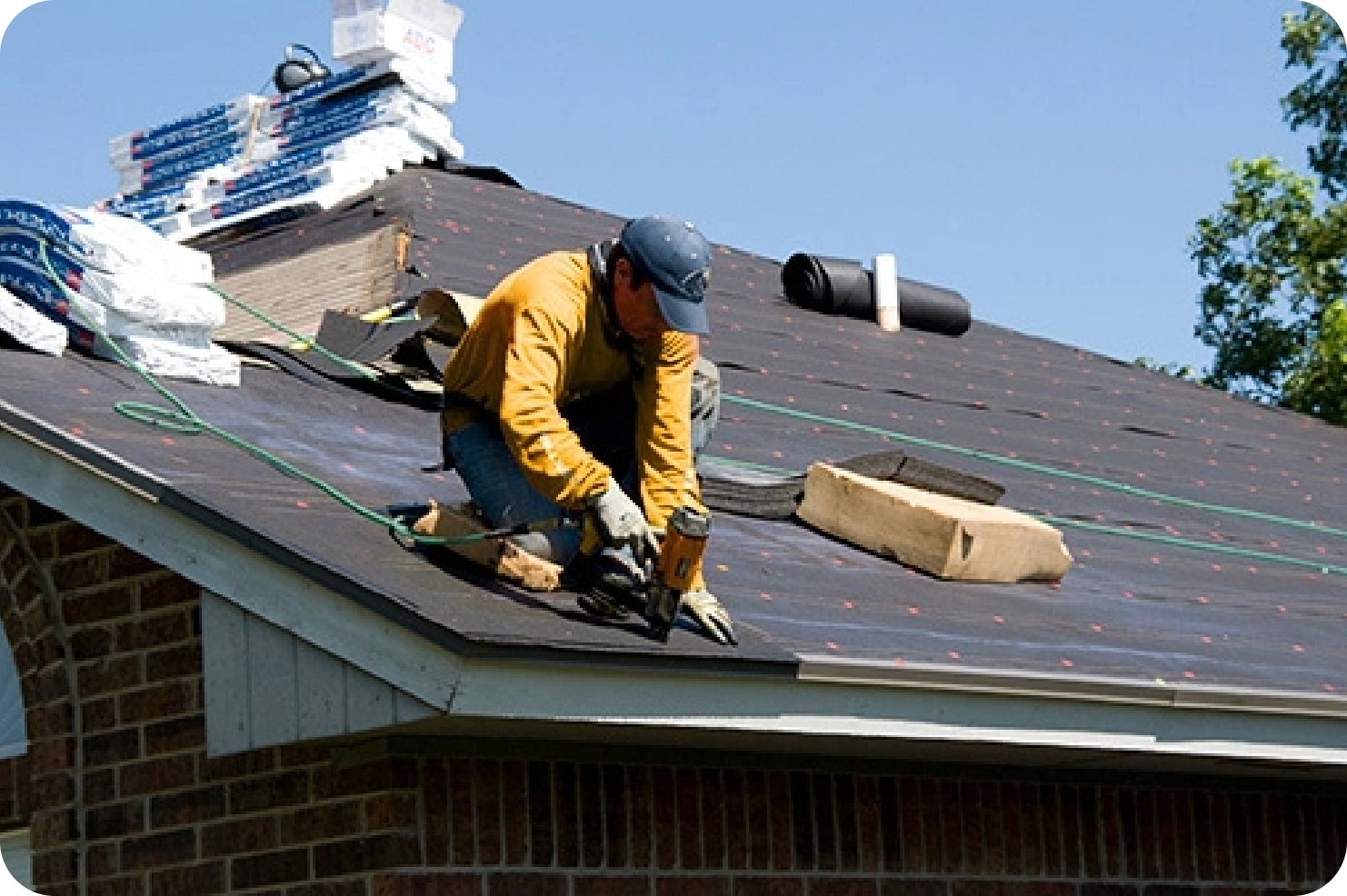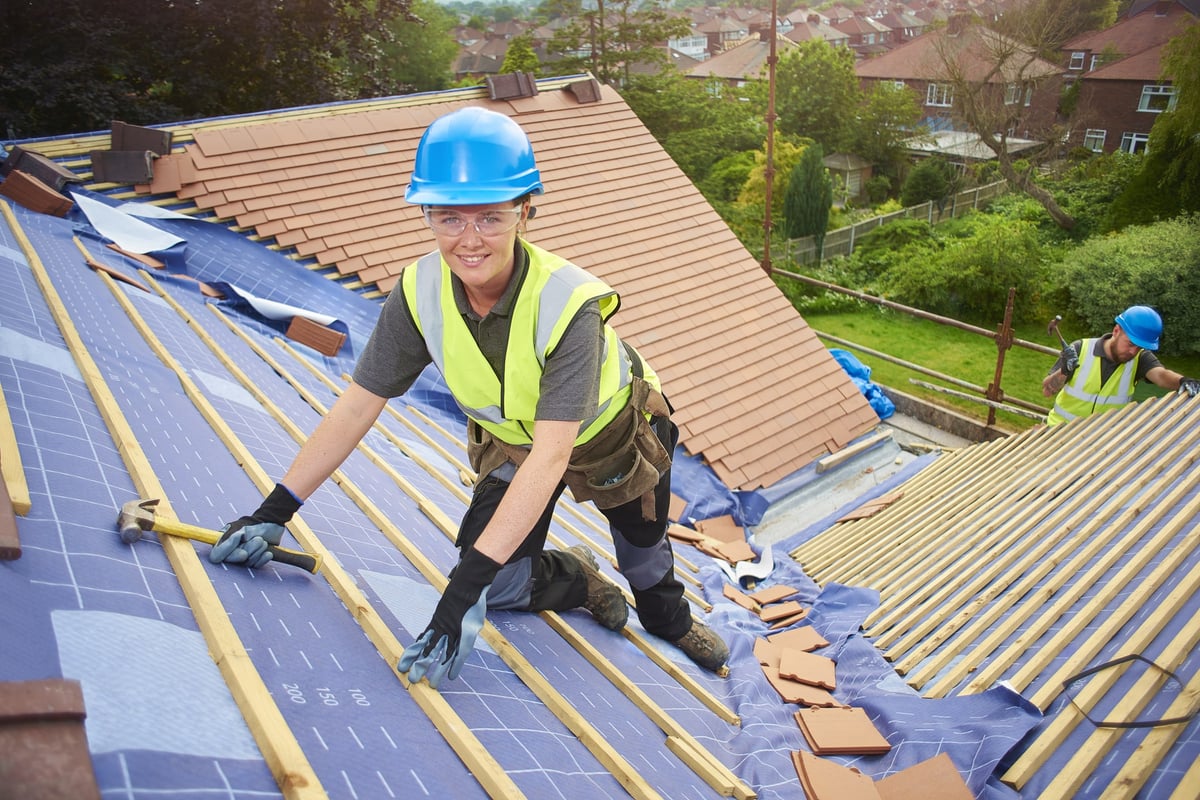Protect your home with the help of a insured Roofing Contractor for secure workmanship.
Protect your home with the help of a insured Roofing Contractor for secure workmanship.
Blog Article
Exactly How to Evaluate Different Roof Options for Your Building Needs
Examining roof covering choices for your structure needs a thorough approach that thinks about various aspects such as the planned use the framework, local environment problems, and material characteristics. It is necessary to consider the benefits and downsides of various roof covering types, from asphalt shingles to steel and clay tiles, while also considering first prices and long-term maintenance. In addition, recognizing power effectiveness and aesthetic allure can affect your decision. As you contemplate these considerations, one question remains: which variables will ultimately direct your selection for a lasting and visually pleasing roofing solution?
Evaluating Your Building's Needs
To efficiently evaluate roof options, start by thoroughly examining your building's needs. Start by taking into consideration the building's meant use, as various structures may demand differing roof covering requirements. Property roofs typically prioritize visual appeals and insulation, while industrial buildings may concentrate on longevity and load-bearing capability.
Following, evaluate the regional environment conditions that will impact roofing performance. Elements such as temperature level fluctuations, rainfall degrees, and wind patterns can influence material selection and design. A roof that succeeds in a warm climate might not execute too in locations susceptible to heavy snowfall or extreme heat.
Additionally, analyze the architectural stability of your building. Ensure that the existing structure can support the chosen roof materials, specifically if thinking about larger choices. It is also crucial to assess any type of regional building ordinance or policies that might determine specific demands for roof.

Contrasting Roofing Materials
When a thorough assessment of your building's needs has actually been finished, the next action entails contrasting various roofing materials. Each material offers distinctive benefits and drawbacks, making it important to straighten your selection with your details demands and conditions.
Asphalt shingles are widely recognized for their affordability and convenience of installment, making them a preferred alternative for household structures. On the other hand, steel roof, known for its sturdiness and longevity, can stand up to harsh climate conditions however may feature a higher initial investment.
Clay and concrete tiles give superb thermal insulation and aesthetic allure, particularly for Mediterranean-style design, yet they require an even more robust structural support because of their weight. Wood shakes offer an all-natural look and great insulation residential properties however may demand more upkeep and are vulnerable to fire risks.
Assessing Expense and Spending Plan
Examining your roof covering options necessitates a mindful analysis of expense and budget factors to consider. The overall allocate a roofing job comprises a number of factors, including product expenses, labor costs, maintenance, and potential long-term financial savings. It is important to establish a clear spending plan before checking out specific roof products, as this will certainly lead the decision-making process and assist you stay clear of overspending.
Begin by obtaining quotes from numerous professionals to comprehend labor prices in your region. Ensure that these quotes consist of all required services, such as elimination of the old roofing, installment, and any extra functions, like insulation or ventilation enhancements - Perrysburg Roofer. Next off, evaluate the price of various roof covering products, taking right into account both first installment expenses and expected lifespan

Comprehending Energy Performance
Power efficiency plays a critical role in the option of roof covering materials and systems, dramatically affecting both energy consumption and general convenience within a building. An appropriate roof covering can enhance thermal efficiency, decreasing the demand for home heating and cooling down systems, which consequently reduces power expenses and reduces ecological influence.
When evaluating roofing options, take into consideration materials that reflect instead of soak up warm. Light-colored or reflective roofing items can significantly lower roofing system surface browse this site temperatures, resulting in reduced power use during warm months. Additionally, appropriate insulation and air flow are vital to maximize the energy efficiency of the entire roof. Insulation stops warmth transfer, while ventilation reduces heat build-up in the attic room area.
Another essential variable is the roof covering system's durability and maintenance needs. Long lasting materials that require less regular replacement add to long-term energy cost savings. Additionally, the energy performance of a roof covering system can also be evaluated via its conformity with well-known sustainability scores such as ENERGY STAR or LEED.
Thinking About Visual Allure
A roofing system's aesthetic appeal considerably affects the overall appearance of a building, matching its architectural design and improving aesthetic appeal. Roofing Contractor. When evaluating roof alternatives, it is important to think about how the selected material, shade, and layout will certainly balance with the existing framework and area. A properly designed roof can you could look here raise also the easiest of buildings, transforming them into visual prime focus
Different roof covering products offer various visual qualities. For instance, typical shingles might stimulate a traditional charm, while metal roof covering can present a modern, sleek look. Furthermore, the shade of the roof covering product plays an essential role; lighter tones can make a structure appear more roomy, while darker tones might develop a cozier setting.
Additionally, building aspects, such as dormers and eaves, can improve the roof's visual effect. It is a good idea to speak with specialist designers or designers to guarantee the selected roof covering option aligns with the total layout intent. Eventually, a roofing needs to not only offer functional advantages yet likewise contribute favorably to the building's aesthetic, reflecting the proprietor's taste and the personality of the surrounding setting.
Final thought

Report this page